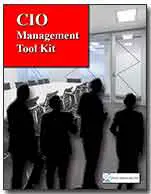A CIO's guide to IT portfolio management

Keeping track of all the IT projects involved in a large company can be exhausting, and it's difficult to give adequate attention to each one using traditional methods. Fortunately, developing technologies have made it possible for CIOs and IT directors to automate many of the processes involved, making IT portfolio management much simpler and a much more effective way of doing business. By following investments across their life cycles, making predictions, and analyzing behavior, modern IT management can produce powerful results.
Technology and the investment world
As computers have increased in efficiency and as systems for managing large amounts of data have improved, investment has been one of the main areas to benefit. Anyone who has handled investment management directly will be aware there are a great many variables to consider in relation to any given individual investment, and when a large number of investments have to be balanced on an ongoing basis to maximize their business potential, it's difficult for one human being - no matter how gifted - to cope. This means that technology and investment are a natural fit, because many of the necessary tasks are in fact very straightforward for computers to handle. Bringing in effective automation frees up CIOs to deal with those matters that really require a human touch, such as anticipating the outcome of meetings between key players who have not previously met each other.
Business strategy and the IT portfolio
Before developing an IT portfolio, it's important to think about how it can support the overall strategy of the business in question. This means looking ahead at business plans and identifying the general type of IT investment likely to be needed, as well as analyzing the current market conditions and considering the type of investments likely to produce good returns. At this stage, many people find it useful to bring in the services of a professional investment advisor. A strong initial set-up well suited to the needs of the individual business will make it much easier for the CIO to keep things running smoothly thereafter.
Key processes in IT portfolio management
Once goals and objectives have been established, IT portfolio management breaks down into three key areas: monitoring performance, managing risk, and making trade-offs and adjustments as required. Technology can help in the following areas:
- Tracking investments and aggregating data into concise reports that can easily be compared and contrasted.
- Identifying the relationship between investment performance and business projections and objectives, across time.
- Making comparative recommendations to make it easier for the CIO to maintain a healthy balance within the portfolio.
- Making budget recommendations and establishing a baseline budget based on performance and established objectives.
- Identifying new investment opportunities that could fit into the established portfolio and the wider aims of the business.
Many businesses use enterprise architecture systems to interlink these processes, making it possible to fit elements of the system together automatically (for instance, reducing the investment going into a particular area when indicators are poor). Systems such as this can incorporate modular elements as required, keeping track of things such as regulatory requirements and tax issues.
A changing investment environment
With more and more businesses now taking advantage of technology such as this, it has become still more difficult to get by without it. Its existence, however, has enabled CIOs and IT managers to keep up with an environment in which their project work is becoming ever more complex. With IT systems managing the numbers, they can focus on establishing the technological viability of different potential investment options, using their expertise to attach appropriate value to each. This enables businesses to get the best value out of people originally hired or promoted for their skills, rather than having them spend most of their time simply keeping track of numbers.
The growing importance of IT investment
IT investment portfolio management has also grown in importance, as IT budgets have come to represent an increasingly large portion of overall company expenditure. This has increased the value placed on CIOs themselves in part because it has made a significant part of the work involved in running such businesses unintelligible to those outside the IT department. With this has come added responsibility; however, and the advancement of tools to make the job easier is an important part of how CIOs are dealing with this. The IT portfolio management approach is helping them to effectively guide the businesses for which they work through an increasingly complex world.

